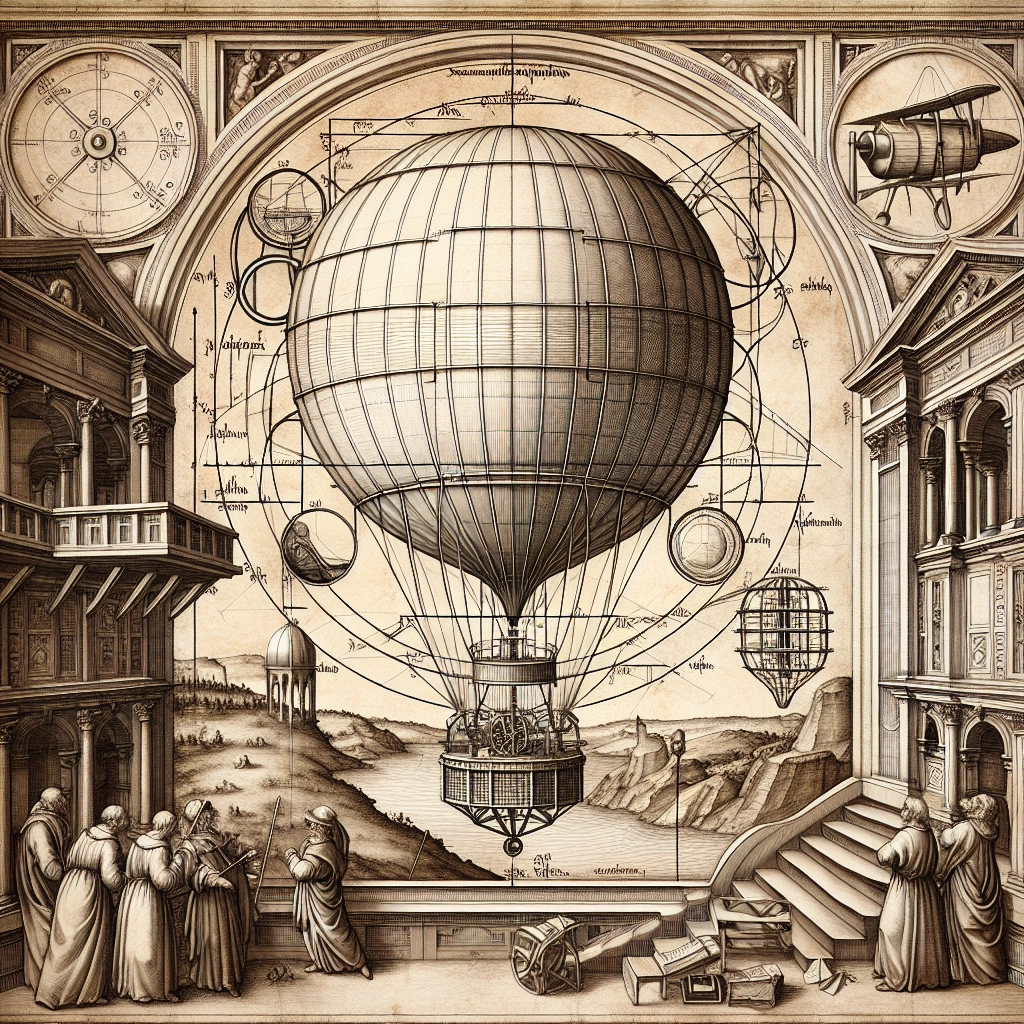
- Published on
- Authors

- Name
- ric de yuga 😄
🎈 The Vacuum Balloon: A Revolutionary Concept in Space Exploration? 🎈
As humanity continues to push the boundaries of space exploration, innovative ideas for reaching the final frontier are constantly emerging. One such concept is the vacuum balloon – a lightweight, hollow structure that uses the principle of buoyancy to lift payloads to space. In this blog post, well explore the science behind this intriguing idea and examine whether it could revolutionize the way we send objects into space.
🧪 The Physics Behind the Vacuum Balloon 🧪
To understand the concept of the vacuum balloon, we first need to delve into the fundamental physics principles at play. The key concepts involved are:
Buoyancy: Buoyancy is the upward force exerted on an object immersed in a fluid (in this case, the atmosphere). An object will float if its density is less than that of the surrounding fluid.
Atmospheric Pressure: Earth's atmosphere exerts pressure on objects due to the weight of the air above them. As altitude increases, atmospheric pressure decreases.
Vacuum: A vacuum is a space devoid of matter, including air. In a perfect vacuum, there is no pressure.
The idea behind the vacuum balloon is to create a structure that is essentially empty inside, like a vacuum, making it significantly less dense than the surrounding atmosphere. As a result, the balloon would experience a strong upward buoyant force, allowing it to lift a payload to high altitudes or even to the edge of space.
🌌 The Math Behind the Concept 🌌
To determine whether a vacuum balloon could work, we need to consider the mathematical relationships between the balloon's size, the payload's weight, and the atmospheric conditions at different altitudes.
The buoyant force (F_b) acting on the balloon can be calculated using Archimedes' principle:
F_b = ρ_air × g × V_balloon
Where:
- ρ_air is the density of air (which varies with altitude)
- g is the acceleration due to gravity (9.81 m/s^2)
- V_balloon is the volume of the balloon
For the balloon to lift a payload, the buoyant force must be greater than the combined weight of the balloon material and the payload:
F_b > (m_balloon + m_payload) × g
Where:
- m_balloon is the mass of the balloon material
- m_payload is the mass of the payload
As the balloon rises, the density of the surrounding air decreases, reducing the buoyant force. The balloon will continue to ascend until it reaches an altitude where the buoyant force equals the combined weight of the balloon and payload, at which point it will float like a bobber on the surface of water.
🚀 Challenges and Limitations 🚀
While the concept of a vacuum balloon is fascinating, there are several challenges and limitations to consider:
Material Strength: Creating a balloon that can withstand the pressure difference between the vacuum inside and the atmosphere outside while remaining lightweight is a significant engineering challenge. The material would need to be incredibly strong and resistant to punctures or tears.
Atmospheric Drag: As the balloon ascends, it will encounter atmospheric drag, which could slow its progress and limit its maximum altitude. The balloon's shape and surface properties would need to be optimized to minimize drag.
Payload Protection: The payload would need to be protected from the harsh conditions of the upper atmosphere and space, such as extreme temperatures, radiation, and vacuum. This would add weight and complexity to the overall system.
Retrieval and Reusability: Recovering the payload and potentially reusing the balloon would be another challenge. The balloon would need to be designed with retrieval mechanisms and be able to withstand the stresses of re-entry into Earth's atmosphere.
🔭 The Potential of Vacuum Balloons 🔭
Despite the challenges, the concept of vacuum balloons holds promise for certain space exploration applications. Some potential use cases include:
High-Altitude Scientific Missions: Vacuum balloons could be used to lift scientific instruments to the upper atmosphere or even the edge of space for studying Earth's climate, monitoring weather patterns, or conducting astronomical observations.
Low-Cost Satellite Deployment: Small satellites or CubeSats could potentially be launched using vacuum balloons, offering a more cost-effective alternative to traditional rocket launches for certain orbital altitudes.
Atmospheric Exploration on Other Planets: Vacuum balloons could be adapted for use on other planets or moons with atmospheres, such as Mars or Titan, to study their atmospheric composition and dynamics.
🌟 Conclusion: A Concept Worth Exploring 🌟
The vacuum balloon is a fascinating concept that combines the principles of buoyancy, atmospheric pressure, and material science to potentially lift payloads to space. While there are significant engineering challenges to overcome, the idea holds promise for certain space exploration applications.
As we continue to push the boundaries of what's possible in space travel and scientific discovery, it's essential to explore innovative concepts like the vacuum balloon. By combining theoretical physics with advanced materials and engineering, we may one day see vacuum balloons becoming a reality and contributing to our ongoing quest to explore the cosmos.
